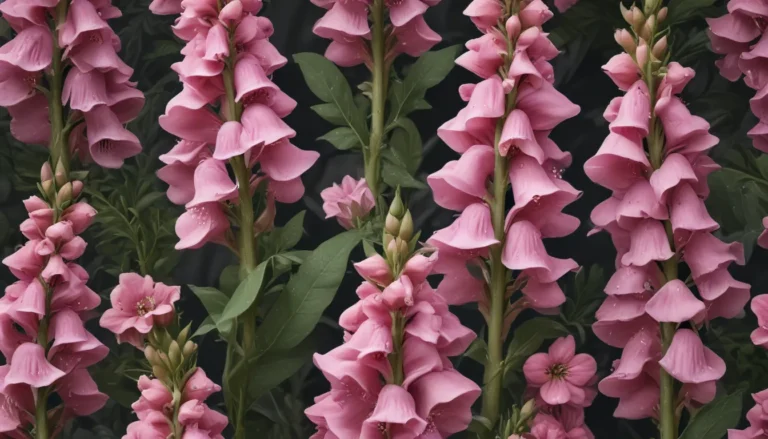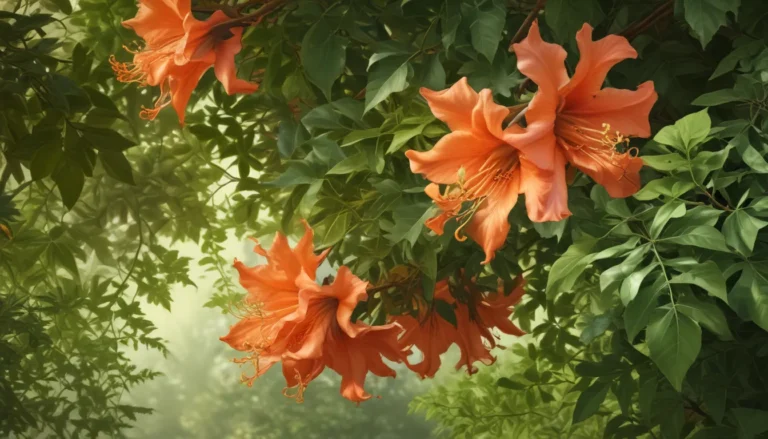The pictures we use in our articles might not show exactly what the words say. We choose these pictures to make you interested in reading more. The pictures work together with the words but don’t take their place. The words still tell you the important facts.
Alkanet, also known as Anchusa officinalis, is a captivating plant that has intrigued botanists, herbalists, and nature enthusiasts for centuries. Its vibrant blue flowers and versatile properties have found applications in skincare, dyeing, and culinary arts. Let's embark on a journey through the world of Alkanet and uncover 10 fascinating facts that make this plant a standout in the botanical realm. So, grab a seat, sip on your favorite beverage, and immerse yourself in the wonders of Alkanet.
The Origins and Nature of Alkanet
Alkanet, scientifically known as Alkanna tinctoria, belongs to the Borage family and is native to the Mediterranean region. This perennial herbaceous plant is renowned for its eye-catching blue to purple flowers and its roots, which contain a red dye called alkannin.
The Allure of Alkanet as a Natural Dye
The roots of Alkanet hold a treasure trove of a natural dye called alkannin, which has been prized for centuries for its ability to impart a rich reddish-purple hue to textiles, cosmetics, and even food products. Its eco-friendly nature and potential as a sustainable dye option have garnered attention across various industries.
Unveiling the Medicinal Magic of Alkanet
In traditional herbal medicine, Alkanet has been revered for its myriad healing properties. With anti-inflammatory, antibacterial, and antifungal qualities, this plant has been used to address a range of health concerns, from skin conditions to respiratory ailments.
The Magnetism of Alkanet for Honey Bees
Alkanet flowers serve as a beacon for honey bees and other pollinators, offering a nectar-rich banquet that supports the vital process of pollination. The presence of Alkanet in an area promotes biodiversity and sustains the delicate balance of ecosystems.
Alkanet: A Gem in Cosmetic Formulations
Alkanet finds a special place in natural cosmetics and skincare products, infusing them with a natural reddish or purple tint. Its gentle properties make it a sought-after ingredient in lip balms, soaps, and lotions, catering to individuals with sensitive skin.
Exploring Alkanet’s Flavorful Footprint in Cuisine
In select culinary traditions, Alkanet roots have been employed as a natural food coloring agent, adding a distinctive reddish touch to dishes like rice, sauces, and desserts. However, caution is advised as the plant's roots possess a potent flavor.
Unraveling the Symbolism and Legends Surrounding Alkanet
Throughout history, Alkanet has been steeped in symbolism, symbolizing love, protection, and spiritual cleansing. Its presence in folklore as a talisman against negativity and a harbinger of positive energies adds a mystical allure to this plant.
Alkanet’s Resilience in Adapting to Adverse Conditions
Alkanet's robust nature enables it to thrive in diverse environments, enduring drought, poor soil quality, and extreme temperatures with grace. This resilience underscores its versatility and resilience as a valuable botanical asset.
Pioneering Alkanet as a Sustainable Dye Alternative
Given its vibrant and long-lasting dye properties, Alkanet has emerged as a promising candidate for replacing synthetic dyes. Its eco-friendly origins and sustainable attributes make it an appealing choice for environmentally-conscious textile production.
Cultivating and Harvesting Alkanet: A Labor of Love
Alkanet can be cultivated in home gardens with relative ease, requiring minimal maintenance. The roots, which house the prized dye, are typically harvested in autumn at peak maturity. Once harvested, they can be dried and ground to extract the coveted dye pigment.
Discover the Enigmatic Charm of Alkanet
In conclusion, Alkanet's allure lies in its vibrant blooms, historical lineage, and versatile applications. Whether you are a gardening aficionado or simply intrigued by the natural world, the insights shared here on Alkanet are sure to kindle your curiosity and deepen your appreciation for this remarkable plant.
FAQs: Unveiling More Mysteries of Alkanet
-
What is Alkanet?
Alkanet, botanically known as Anchusa officinalis, is a perennial herbaceous plant renowned for its striking blue or purple flowers. -
How is Alkanet utilized as a dye?
The roots of Alkanet harbor a red dye named alkannin, which is extracted by boiling the roots in alcohol or oil to yield a deep red pigment used in textiles, cosmetics, and food. -
What health benefits does Alkanet offer?
Alkanet is esteemed in traditional medicine for its anti-inflammatory, antimicrobial properties, aiding in skin conditions like eczema and acne. Further research is warranted to deepen our understanding of its health impacts. -
Can Alkanet thrive in home gardens?
Yes, Alkanet can flourish in home gardens with well-draining soil and adequate sunlight. Regular watering and care are essential for its growth and vitality. -
Are there precautions to heed when using Alkanet?
While Alkanet boasts diverse uses, caution is advised due to potential skin irritation or allergies. Conduct a patch test before using products containing Alkanet extract. -
Is Alkanet hazardous to pets?
Alkanet is non-toxic to pets, yet its rough leaves might cause irritation if ingested. Keep pets away from Alkanet plants to prevent any unwanted issues. -
Can Alkanet be employed in culinary endeavors?
Though historically used as a food coloring agent, Alkanet's culinary use is less prevalent today. Opt for commercially tested food dyes for safe and reliable alternatives. -
Is Alkanet found in natural skincare products?
Indeed, Alkanet extract features in natural skincare formulations for its color-enhancing properties. Prioritize products with safe concentrations of Alkanet extract for skin-friendly outcomes. -
What aliases does Alkanet respond to?
Apart from Alkanet, this plant is known by monikers such as Spanish bugloss, common bugloss, and dyer's bugloss. -
Is Alkanet deemed an invasive species?
Alkanet is not classified as invasive, often cultivated in gardens without aggressive spread in natural settings.
Embrace the Engaging World of Alkanet
With its vibrant blooms, storied past, and versatile applications, Alkanet stands as a captivating botanical gem. As you delve deeper into the realm of Alkanet, you'll uncover a tapestry of intriguing facts and enrich your understanding of this remarkable plant. Let the enchantment of Alkanet inspire your curiosity and nurture your appreciation for the wonders of the natural world.






